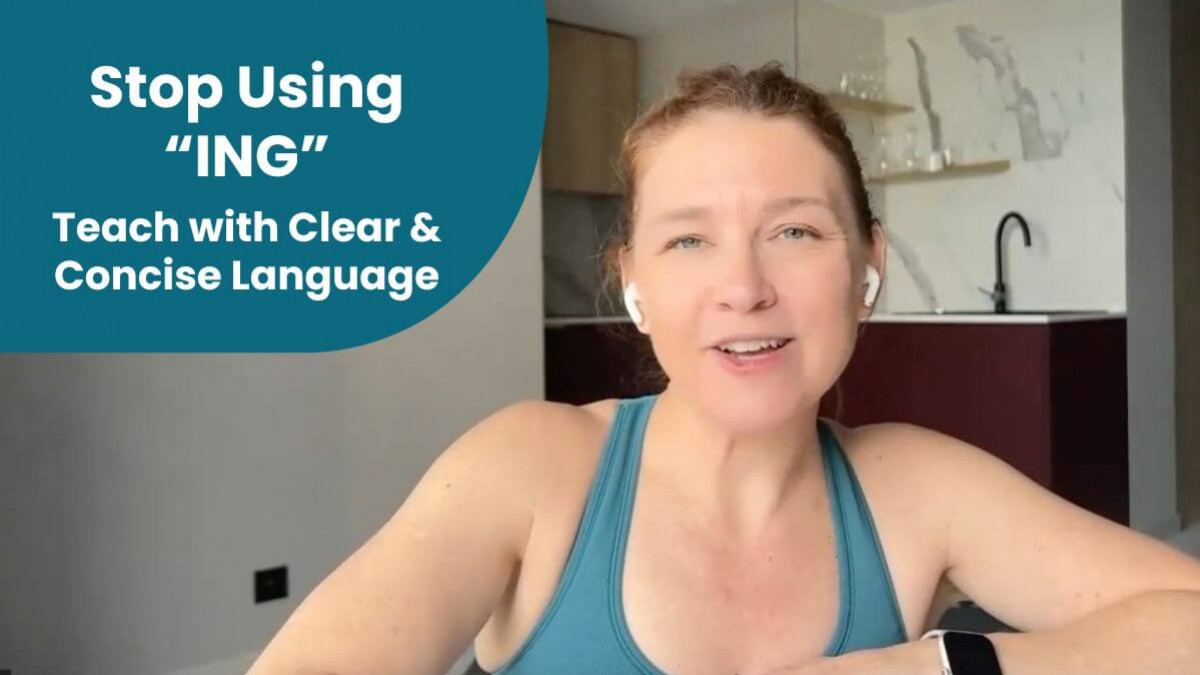Stop Using "ING": Teach Yoga with Clear & Concise Language

Why Using ING can be confusing and less effective when you teach yoga.
The Importance of Clear Language in Yoga Instruction
.
As yoga teachers, we have a responsibility to guide students through a practice that is both safe and effective. One of the most crucial aspects of achieving this is through the use of clear and concise language.
.
The Power of Imperative Verbs...Stop Using 'ING':
The foundation of an effective action cue in yoga is the action itself. Using a verb in the imperative form creates a clear command, which is essential for guiding students effectively. Examples include verbs like “step,” “lift,” and “reach.” These words are direct and leave no room for ambiguity.
Many yoga teachers tend to use present participles—verbs ending in “ing”—such as “stepping,” “lifting,” and “reaching.” Without delving too deeply into English grammar, it’s important to note that present participles can function as adjectives or form continuous verb tenses, which lack the urgency and clarity of imperative verbs.
.
The Misconception of Kindness
There is a common tendency among yoga teachers to soften their delivery to avoid sounding too commanding. As a result, they often shy away from using imperative verbs. However, using present participles instead of commands is not actually kinder—it’s more confusing and harder to follow. It’s entirely possible to use simple, direct commands while still being kind and supportive.
Humans are naturally wired to respond to commands. Consider the following scenario: If you want a three-year-old to clean up their toys, which instruction do you think is more effective?
1. “Put the toy in the box.”
2. “Putting the toy in the box.”
In the first example, the command is clear and direct. Even a three-year-old would understand what is expected. In the second example, the instruction is vague and implies that the action is happening passively, which can be confusing.
.

.
Commands Create Clarity
When it comes to leading yoga asana and teaching to the physical body, commands work best. Your students come to you for guidance, and it’s your responsibility to provide it in a manner that is easy to understand and follow. Using clear, imperative verbs ensures that your students know exactly what to do, which enhances their practice and helps them achieve the desired results.
.

.
Practical Tips for Using Clear & Concise Language
1. Use Direct Commands: Instead of saying, “we’re going to start by stepping to the top of the mat,” simply say, “step to the top of the mat.”
2. Avoid Present Participles: Replace phrases like “we’re lifting our arms” with “lift your arms.”
3. Be Kind and Clear: You can still be supportive and encouraging while using direct commands. For example, “lift your arms, please” or “step to the top of the mat when you’re ready.”
.
In conclusion, the language we use as yoga teachers plays a vital role in the effectiveness of our instruction. By using clear, direct commands and avoiding present participles, we can create a more accessible and impactful experience for all of our students, regardless of their language background. Remember, clear commands are not only effective—they are also kind. Your students will appreciate the clarity and respond positively to your guidance.
.
.
Categories: : cueing, Effective Teaching Techniques, cuing
 Trish Corley
Trish Corley 
